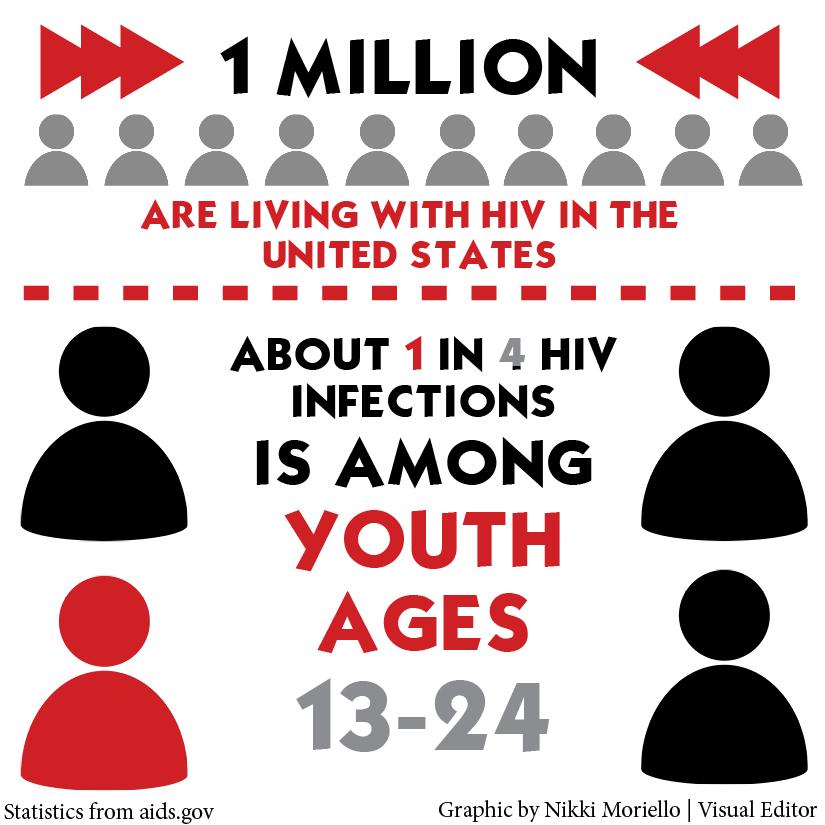With millions of federal funding secured, a team of Pitt researchers has set out to do what has never been done — find a cure for HIV.
The Centers for Disease Control and Prevention first published a report about what would come to be known as the AIDS epidemic in 1981. Thirty-two years later, more than one million people are currently affected with HIV/AIDS in the United States. Effective — but costly and time-consuming treatments — can keep the chronic disease at bay, while dedicated scientists around the world work toward a cure.
In Pittsburgh, a pair of researchers at the UPMC Center for Vaccine Research were awarded a total of $6.3 million in grants last week from the National Institute of Health for their work on a cure for HIV/AIDS. The husband-wife team of Dr. Cristian Apetrei and Dr. Ivona Pandrea has researched AIDS at the CVR for the past six years.
The mid-Atlantic AIDS Education & Training Center, based at University of Pittsburgh Graduate School for Public Health, also won a $10.7 million grant last week from the U.S. Department of Health and Human Services Health Resources and Services Administration. The money will go toward researching ways to improve the quality of life for those affected with AIDS and combating the spread of the virus, by funding, training and consulting health professionals.
According to Dr. Robert Montelaro, co-director of the CVR, before winning this award, Pandrea and Apetrei had already won a combined $17 million in NIH grants in the six years they’ve been at UPMC. The Pittsburgh AIDS Center for Treatment has treated HIV patients since 1989 and became a site for NIH-funded clinical trials in 2000.
“The significance is,” Montelaro said, “that the University of Pittsburgh has been recognized as a leader in HIV research for the past 30 years, and these awards kind of validate the reputation of the University.”
Montelaro stressed that although those affected by HIV/AIDS currently have effective treatments for controlling symptoms, a final solution hasn’t been found yet.
“We’ve succeeded very well in making HIV a manageable disease with drug treatment, but we have these residual reservoirs of infection that we need to figure out how to target to eliminate them completely, so that disease doesn’t come back when you remove drugs,” Montelaro said.
Apetrei’s research aims to develop a cure that could potentially rid all traces of the virus in affected patients.
His cure involves reactivating the cell “reservoirs” of HIV — small amounts of the virus that remain in quiescent cells even after the disease has been mostly eradicated from the body. The inactive virus is difficult to kill because the immune system will not attack it. If treatment for AIDS stops, these reservoirs leave the patient vulnerable to infection.
Apetrei is attempting to eliminate these reservoirs of HIV through the “shock and kill” method. After reactivating the virus with a biological agent, the patient’s own immune system partners with the drug treatment to kill the virus.
“By the end of the day, if we conduct this treatment enough and appropriately, we will have an impact on the reservoir and cure the infection,” said Apetrei.
While Apetrei searches for a cure, Pandrea is working on improving the quality of life of those who still suffer from HIV.
Pandrea’s investigation focuses on the the link between hypercoagulation — excessive blood clotting — and accelerated aging that is associated with HIV. Even if the patient’s condition does not detiorate to AIDS, HIV patients are more susceptible to cardiovascular, renal and liver diseases.
In addition to investigating the biological mechanism behind these diseases, Pandrea is testing drug therapies to treat the hypercoagulation that may cause the co-existing conditions, called comorbidities. Last spring, her team showed that the drug Sevelamer, which is usually used to treat dialysis patients, reduced comorbidities in monkeys infected with the simian strain of HIV.
Even though researchers have developed effective treatments, much work goes into providing care to those who need it.
The AETC focuses on the prevention and treatment of AIDS through funding, training and consulting health professionals throughout Pennsylvania, West Virginia, Virginia, Maryland, Delaware and Washington, D.C. It provides training through on-site and remote sessions to doctors, nurses, dentists, social workers and other professionals who work with AIDS patients, as well as providing ongoing care to people affected with HIV in the mid-Atlantic region.
The grant will allow the AETC to continue its work in the region for four more years and distribute funds to other treatment centers to provide patient care locally.
Linda Frank, associate professor of infectious diseases and microbiology, is the executive director of the AETC and has worked in the field of AIDS treatment since 1988.
When the AETC first received funding in 1988, Frank said they did not have any anti-viral medications available, so instead they treated patients for the opportunistic diseases that came with the weakened immune system of an HIV/AIDS patient, including cancer and pneumonia. The AETC formed support groups to help staff cope with the high number of deaths, Frank said.
Since it began using anti-viral medications in 1996, has reduced the mortality rate by 50 percent.
“We want every person to know their HIV status. Because we know if you get people with HIV on treatment, they can live a relatively long life,” Frank said. “People are living now who would have died 30 years ago.”



